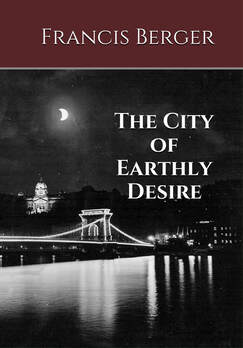I have referred to the passage above — taken from Dostoevsky’s The Brothers Karamazov — as the best non-biblical encapsulation of what the essence of Christianity is.
Following Dr. Charlton’s incisive suggestions, I augmented the passage to include heaven, resurrection, and everlasting life:
Thou didst desire man's free love, that he should follow Thee freely into heaven, enticed and taken captive by Thee. In place of the rigid ancient law, man must hereafter, with a free heart, decide for himself what is good and what is evil, and with a free heart, actively choose resurrection and everlasting life, having only Thy image before him as his guide.
The augmented passage above still serves as my touchstone concerning the “is-ness” of Christianity.
Upon reviewing this augmented passage today, I was struck by the limited role of the symbols within it. Two references to symbols appear. The first — the ancient rigid law — is supplanted, while the second — the image of Jesus — is only meant to serve as a guide.
The limited role of the symbol within the original Dostoevsky passage is significant, particularly when juxtaposed against freedom, which appears three times in the passage — free love, follow freely, and free heart.
The rigid ancient law and the image of Jesus within the passage are intermediaries. The passage clearly states that the ancient law no longer serves; that it can no longer act as a bridge between the subject and reality.
The image of Jesus, on the other hand, does still serve as an intermediary, but only as an intermediary. The image is a guide, not a final destination. It points to reality but is not reality in and of itself.
It is worth noting that the bulk of the heavy lifting within the passage lands firmly on the shoulders of the subject.
Jesus desires the subject’s free love — love that the subject generates from within himself without the need for external influence, persuasion, or coercion.
Jesus also desires that the subject be enticed and taken captive by Him, but only by following Him freely. Again, the absence of all external influence, persuasion, or coercion.
Upon discerning the spiritual limits of the ancient rigid law, the subject must decide what is good and evil from his own free heart. Once again, the subject must decide, and he must decide with his own free heart, not his free mind, which is prone to wander into the realm of external symbols.
And within all of that, the image of Jesus serves only to guide. The subject motivated by free love should follow Jesus freely and free-heartedly decide for himself what is good and what is evil.
Without symbols and with the image of Jesus serving only as a guide, the subject must freely and directly know - heart-know - Jesus as the Way, the Truth, and the Life.
He must allow the image to guide him to that directly-known reality.
Lacking that, the subject only gets as far as the image of Jesus.

 RSS Feed
RSS Feed

